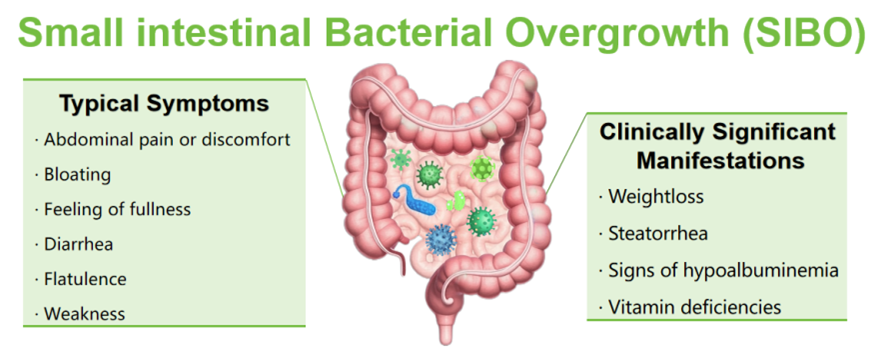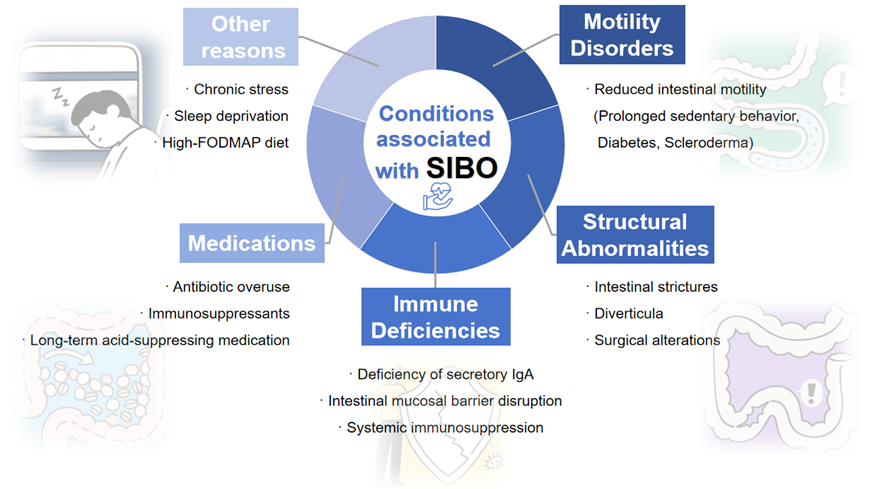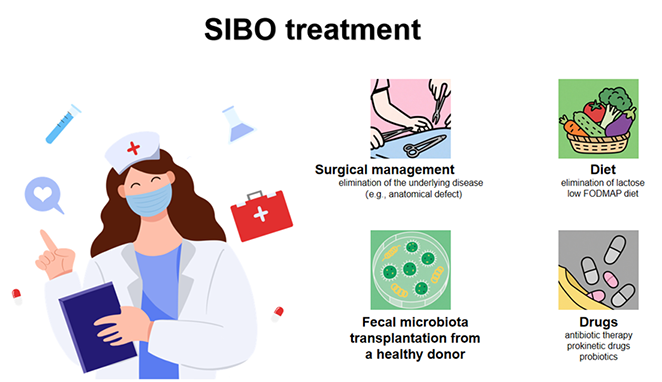What is SIBO?
Small Intestinal Bacterial Overgrowth (SIBO) is a pathological condition characterized by excessive bacterial colonization in the small intestine, which disrupts its normal ecology and causes gastrointestinal symptoms. Under physiological conditions, the small intestine maintains a significantly lower microbial population compared with the colon. In SIBO, this ecological balance is disturbed, leading to dysbiosis and downstream clinical manifestations.

How is SIBO Diagnosed?
Diagnosing SIBO can be challenging due to its nonspecific symptoms, which often overlap with other gastrointestinal disorders. The most common diagnostic methods include:
Breath Testing(Non-invasive, rapid and highly accurate):
This non-invasive method measures the levels of hydrogen and methane in the exhaled breath after the ingestion of a carbohydrate substrate (e.g., glucose or lactulose). Elevated levels of these gases indicate bacterial fermentation in the small intestine. A rise in hydrogen levels by at least 20 ppm above baseline within 90 minutes is diagnostic of SIBO.
Small Bowel Aspiration and Culture:
This invasive method involves obtaining a sample of fluid from the small intestine through an endoscope and culturing it to determine the bacterial count. A bacterial colony count of ≥10^3 CFU/ml is generally considered diagnostic of SIBO.
What Causes SIBO?

How is SIBO Treated?

SIBO is a complex condition that requires a multifaceted approach for diagnosis and treatment. With advancements in diagnostic techniques and a growing understanding of the gut microbiome, there is hope for improved management and better outcomes for patients. If you suspect you have SIBO, consult a healthcare provider for accurate diagnosis and personalized treatment.


